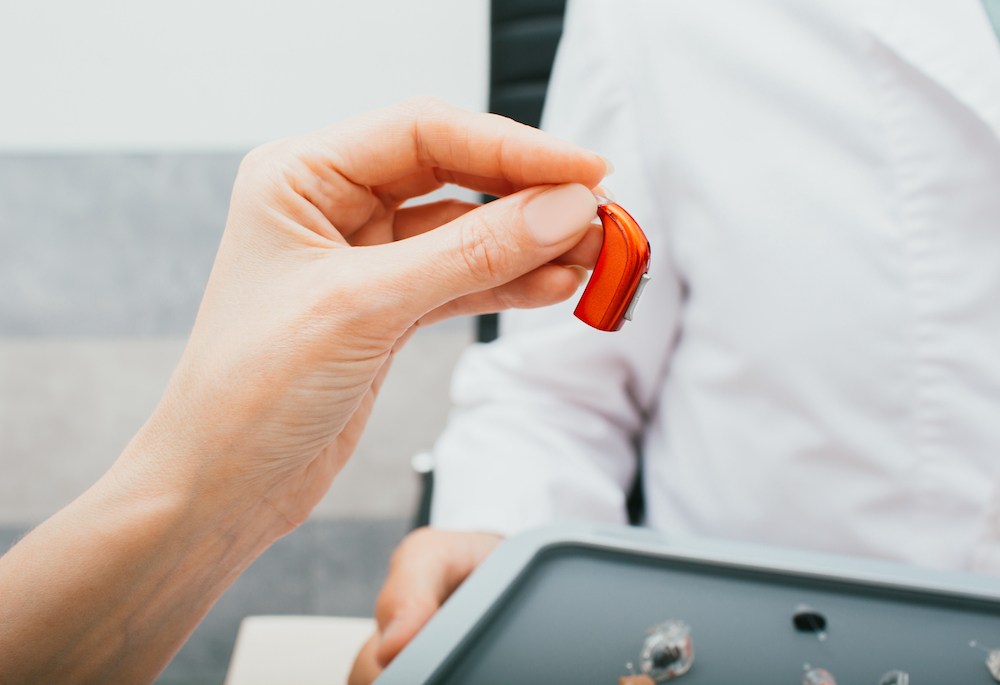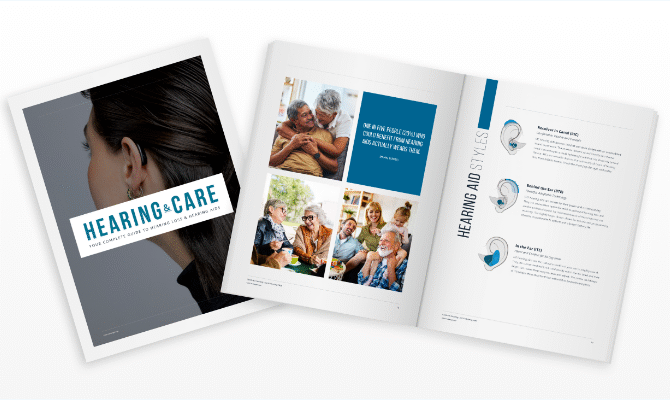The Impact of 5G on Hearing Aid Technology
As 5G networks continue to roll out across the country, you’ve

By: admin | July 29, 2025
Whether you’re mowing the lawn, attending a concert or working in a noisy office, loud sounds are part of daily life. You might not think twice about the roar of a leaf blower or the volume at your favorite restaurant, but repeated exposure to loud noise can gradually damage your hearing over time. The tricky part is that this damage often happens so slowly that you don’t notice it until it’s already significant. What’s encouraging is that noise-induced hearing loss is largely preventable when you use the right ear protection for your specific activities and environment.
Choosing ear protection isn’t a one-size-fits-all decision. The earplugs that work great for sleeping might not be the best choice for a woodworking project, and what works for your friend at the shooting range might not feel comfortable for you during a motorcycle ride. Your lifestyle, the types of noise you’re exposed to and your personal comfort preferences all play a role in finding protection that you’ll actually want to use. When ear protection fits well and suits your needs, you’re much more likely to wear it consistently, which means better long-term protection for your hearing.
Noise-induced hearing loss (NIHL) happens when sounds are loud enough to damage the delicate structures in your inner ear. Inside the cochlea, tiny hair cells pick up sound vibrations and turn them into signals your brain can understand. When you are exposed to loud noises, these hair cells can bend or break, and unlike other cells in the body, they do not grow back. Repeated or very loud sounds over time can lead to permanent changes in how well you hear, making it harder to catch speech clearly, especially in noisy environments.
Signs of noise-induced hearing loss often start subtly. You might notice a ringing or buzzing sound in your ears, called tinnitus, after being around loud noise. Speech may sound muffled or you may need to ask people to repeat themselves more often. These changes can happen gradually if you are around loud noise regularly, or suddenly after a single very loud event like a firework going off close by. Recognizing these signs early is important because once damage is done, it cannot be reversed.
Sounds at or above 85 decibels (dBs) can be risky if you are exposed for long periods. Everyday sources include lawnmowers, power tools or heavy city traffic. Louder sounds, like concerts or sporting events, can reach 100-110 dBs, where even short exposure can be harmful without protection. Very brief but extremely loud sounds like gunshots or fireworks can exceed 120 dBs and cause immediate damage. Wearing earplugs or earmuffs, lowering the volume on personal devices and taking breaks from noisy environments all help reduce your risk and keep your hearing healthy over time.
Ear protection helps prevent noise-induced hearing loss (NIHL) because it lowers the amount of sound energy that reaches the sensitive parts of your inner ear. Wearing earplugs or earmuffs creates a barrier that blocks or absorbs some of the sound waves, reducing their intensity before they can cause harm. This limits the strain on the tiny hair cells in the cochlea, helping them stay healthy and functional even in loud environments. Protecting these hair cells is important since once they are damaged, they do not grow back, leading to permanent hearing changes.
There are different types of ear protection designed for different situations. Foam earplugs are affordable and easy to use, expanding to fit securely in your ear canal to reduce overall sound levels. Reusable custom-molded plugs can be made for comfort and specific activities like concerts or work, offering protection while maintaining clearer sound. Earmuffs cover the entire outer ear and work well in very loud settings like construction sites or shooting ranges.
Consistently using ear protection in noisy environments can make a big difference in preserving your hearing. Even short bursts of loud noise can cause lasting damage, so it is important to think ahead about when and where to use hearing protection. Whether you are mowing the lawn, attending a music festival or working with loud equipment, taking these steps helps you enjoy what you love while keeping your hearing safe.
There are several types of ear protection available, each designed for different needs. Foam earplugs are soft and easy to use, fitting right into your ear canal. Earmuffs cover the whole ear and are often used in jobs with loud machines or for activities like yardwork. Custom-molded earplugs are made by a hearing specialist to match the shape of your ears and can be more comfortable for long wear. Here are some common options:
Ear protection is not one-size-fits-all. The type you choose should match the activity you want to enjoy or the work you do each day. For example, many people use specialized earplugs for sleep. These are designed to reduce noise from traffic, snoring or a busy household without blocking all sound entirely, helping you rest better. Swimmers often rely on waterproof earplugs to keep water out of their ears and reduce the risk of ear infections, especially for children or anyone prone to swimmer’s ear.
In recreational settings, hunters and shooters can benefit from electronic ear protection that lowers loud gunfire while letting you hear speech and movement around you. Musicians and concertgoers often use high-fidelity earplugs that lower volume evenly across frequencies so music still sounds clear but at a safer level. Even casual activities like mowing the lawn, using power tools or attending motorsport events call for foam plugs or earmuffs to reduce exposure to loud engine noise.
Occupational hearing protection is just as important. Workers in construction, manufacturing, aviation or other noisy environments are typically required to wear hearing protection like earmuffs or industrial-grade earplugs. These reduce continuous loud noise that can damage hearing over time. Employers often provide training on when and how to use protective gear properly. Taking these guidelines seriously helps prevent long-term damage that might not be obvious at first.
Choosing the right ear protection for your activity is a smart way to look after your hearing health. Whether you want a quiet night’s sleep, safe days on the job or clear sound at a concert, there is an option designed to meet your needs. Making ear protection part of your routine helps ensure you can keep enjoying what you love without risking your hearing.
Concerts and music events often have high sound levels that can put your hearing at risk. Standard foam earplugs are easy to use but may make music sound muffled. Musician’s earplugs or filtered earplugs lower the volume while keeping the sound clear, making them a good choice for music lovers. Look for ear protection that is comfortable enough to wear for several hours and fits well without slipping out. Bringing your ear protection with you ensures you always have it when needed.
Sports and recreation can expose your ears to sudden loud sounds or ongoing noise, like gunfire during shooting sports or engines at motorsport events. Wearing earplugs or earmuffs designed for these activities lowers the chance of hearing loss while still letting you enjoy your hobbies. Some products allow you to hear voices and important sounds while blocking out harmful noise, which is helpful for team sports or when following safety instructions.
Children’s ears are more sensitive to loud sounds, so extra care is needed. Make sure children use ear protection during noisy activities like fireworks, concerts or when using loud toys. Teaching kids to lower headphone volume and limit listening time helps protect their hearing as they grow. Setting a good example by wearing ear protection yourself encourages children to do the same.
Your choice between reusable and disposable ear protection depends on how often you are in loud environments. Disposable earplugs are usually made of soft foam and meant for single use, while reusable options can be cleaned and worn many times. If you spend time in noisy places regularly, reusable earplugs or earmuffs may last longer and save money over time. Disposable plugs are handy for travel or sharing but may not fit as well after one use.
A good fit is essential for ear protection to work as intended. If earplugs or earmuffs feel too tight, fall out or let in more noise than they should, you might be less likely to wear them consistently. Before entering a noisy area, test the fit. Earplugs should seal the ear canal without causing pain, while earmuffs should sit snugly around your ears with no gaps. If you notice discomfort or sound leaking in, try adjusting the fit or switching to a different size or style for better comfort and safety.
Proper care helps your ear protection last longer and work as intended. Clean devices also lower the chance of ear infections and make wearing them more comfortable. Follow these steps:
Protecting your hearing is an investment in your quality of life. When you choose the right ear protection and make it part of your routine, you can keep enjoying the activities you love without worrying about long-term damage. Whether you are relaxing at home, tackling projects at work or spending time outdoors, taking simple steps to guard against loud noise helps you hold on to the sounds that matter most. Paying attention to your environment and knowing when to use ear protection is an easy, effective way to support your hearing health.
If you have questions about choosing the best ear protection for your needs or want to learn more about preventing hearing loss, we are here to help. Contact Hearing Well Matters in Burlington, ON at (647) 247-2704 to talk with our team about your options and get personalized recommendations.
Tags: hearing loss prevention tips, hearing protection products

As 5G networks continue to roll out across the country, you’ve
By: admin | October 20, 2025

Whether you’re mowing the lawn, attending a concert or working in a
By: admin | July 29, 2025

Hearing aids have evolved from basic amplification devices to
By: admin | June 20, 2025



